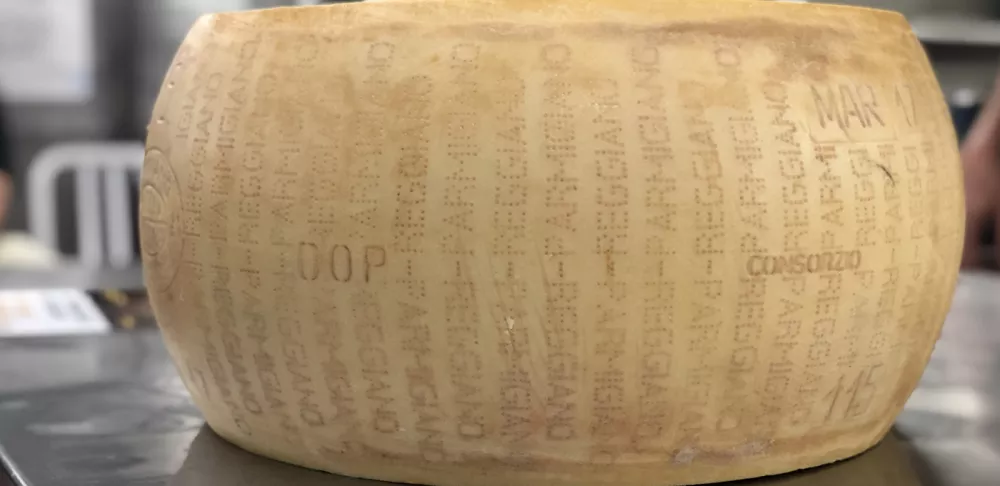From certain varieties of olives and potatoes to various cured meats, to balsamic vinegar and cheese, there are certain foods that are inextricably tied to their place of origin. The specific terroir, history and traditions of those places mean that their specialty foods simply cannot be replicated elsewhere. Such products often enjoy PDO — “Protected Designation of Origin” — status, meaning that the names of those products are not to be used outside of their designated region and its specific requirements. A Parmigiano-Reggiano by any other name, to contradict Shakespeare, does not indeed smell as sweet.
Related reading: The Difference Between Parmigiano-Reggiano, Grana Padano, and Pecorino
In the current PDO system, cheese tops the list of specialty food items that have specific name protection throughout Europe. In France alone, 32 out of its 39 protected products are cheese.
Here, we take a look at the PDO system: its history, cheeses you should know, and why it matters.
History of Name Protection and the PDO System
Many countries have or have had their own systems for safeguarding their specialty products over the years. Wine is a wide example, as numerous countries have systems for protecting regional designation. Champagne is the most famous example of a French AOC, or Controlled Appellation of Origin. Even in the United States, we have a system for protecting distinctive wine regions, known as the AVA system, or American Viticultural Areas.
In the cheese realm, Roquefort is a blue cheese that is believed to be over 1,000 years old, but was name-protected by the French AOC system in 1927, the first French cheese to gain such status. This AOC status only grants it protection in France, however, meaning French cheesemakers can’t otherwise make a blue cheese called Roquefort — even if it follows the same recipe and procedure — outside of the designated region of Roquefort. The cheese is required to be aged in certain caves in the region, and only about seven producers are authorized to make it.
Related reading: Fundamentals of Cheese: Getting the Blues
The current PDO system was created by the European Union in 1992 as a means of offering wider protection for specialty foodstuffs throughout member countries. (The United Kingdom is still included in the PDO system, despite having left the EU.) About 180 different cheeses have PDO status throughout Europe.
Important Cheeses That Do and Do Not Have PDO Status
Some of the best-selling cheeses in the United States are those that are name-protected by the PDO system, ensuring their quality and consistency wherever they are bought and consumed. Those include cheeses from throughout Europe such as the aforementioned Roquefort and Parmigiano-Reggiano, as well as Comté, Feta, Asiago and Manchego, among many others.
Notably, several extremely popular cheeses don’t have widespread name protection. Despite being named for actual places, the terms Brie, Camembert, Gouda and Cheddar are not protected unto themselves. Only very specific cheeses within those categories have PDO status: Brie de Meaux, Camembert de Normandie, Noord-Hollandse Gouda and West Country Farmhouse Cheddar. This means that cheesemakers around the world are free to use the words cheddar and gouda (lowercase) to name and describe their cheeses. Despite not having name protection broadly, however, both worldwide cheddars and goudas tend to follow the unique processes of their namesake cheeses. “Cheddaring” refers to a process of cutting, salting, and stacking the curds, in such a way as to result in a savory, crumbly cheese. Gouda’s curds are typically rinsed with water before formation, leading to its telltale sweetness at any age.
Related reading: Understanding Gouda
Also of note, one of the top cheesemaking countries in Europe, Switzerland, is not part of the EU and has its own system known as AOP (Protected Appellation of Origin). Switzerland’s famous Gruyère is an important example of the complication of name protection, which is outlined below.
Why Name Protection Matters, and What You Should Look For
The tricky part about the PDO system is that it only automatically guarantees protection throughout the EU, and any greater geographical protection must be legally pursued on a case-by-case basis by concerned parties such as marketing consortiums or cheesemaker collectives. While Parmigiano-Reggiano’s PDO status is respected in the US as a distinctive style of cheese that can only be made in Italy, “Parmesan” was ruled as being an acceptable, generic term to refer to cheeses that are made in the US (or around the world) in the style of Parmigiano-Reggiano. A simple taste test should disavow anyone as to which is a better product. By many metrics, Parmigiano-Reggiano is considered the king of cheeses, and lesser substitutes, especially for culinary applications, should not be considered.
Switzerland’s Gruyère, on the other hand, hasn’t so far been able to extend its name protection to the United States market, so cheesemakers here are still free to call their cheeses gruyere. This practice isn’t necessarily sinister or underhanded in its history: gruyere-style cheeses have been made in the US for over a hundred years by Swiss immigrants who simply brought their homeland recipe with them. US courts have recently ruled that the term gruyere, over time, has become “genericized,” meaning that they don’t believe its Swiss pedigree is important to the name, at least for American consumers. (Naturally, Swiss cheese makers strongly disagree.) In Switzerland, one of the hallmarks of Gruyère is that cows are free to graze on high Alpine pastures. Wisconsin may have excellent grass for grazing, but it doesn’t exactly have the same altitude.
Related reading: All About Alpine Cheese
In order to make sure you’re getting the most authentic, highest quality product, look for the EU PDO label, or the Swiss AOP designation — as well as the full name Le Gruyère AOP — on cheeses you’re buying.






